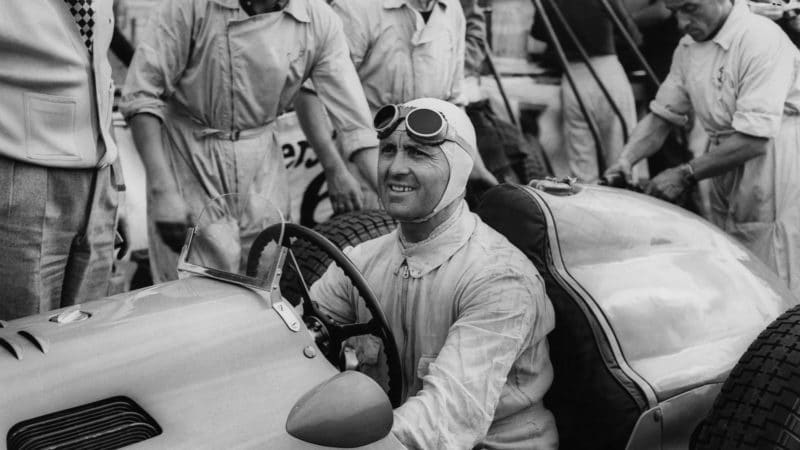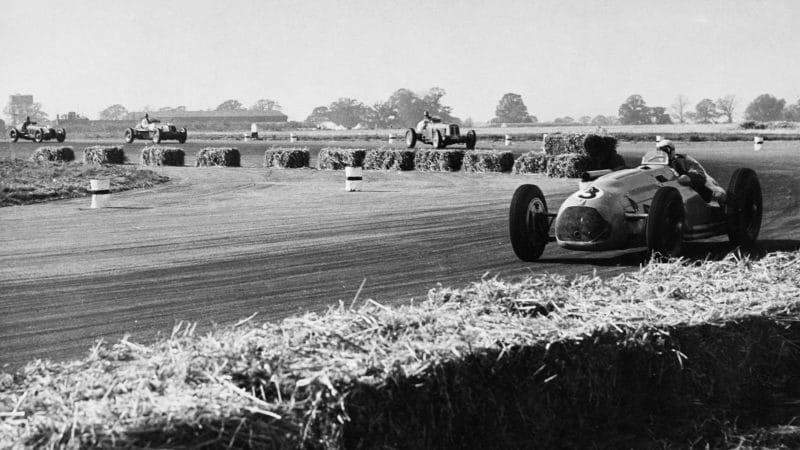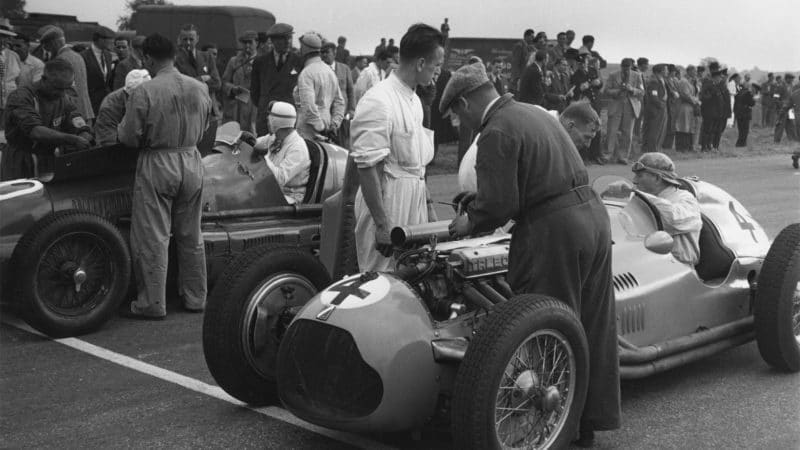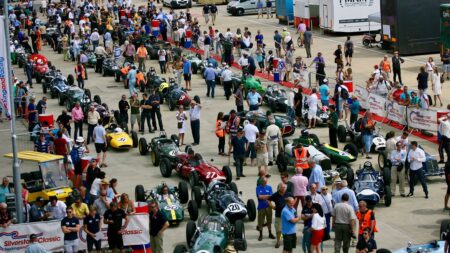No fewer than eight ERAs, almost half of all pre-war production, were entered dating from the very earliest A-types of 1934 to a brace of 1939 E-Types. More modern machines included a quarter of Talbot-Lago T26Cs and a pair of brand new Maserati 4CLTs to go with assorted pre-war 6CMs and 4CLs. Disappointingly for the vast crowds, two cars fielded by the new company created a former Alfa race team manager called Enzo Ferrari failed to turn up. But there was an actual Alfa in the race, and one of the strangest too, for Tony Rolt turned up in the fearsome twin-engined ‘Bimotore’ pre-war monster, less it’s rear engine making it more of a ‘Unicomotore’.
Pre-war heroes like Louis Chiron (Talbot) was there at the age of 49, as was Phi-Phi Etancelin (Talbot) aged 51. Raymond Mays was there for ERA to keep the English end up at 49. But the next generation were there too, though understandably old to be starting out in Grand Prix racing having been somewhat delayed by keeping the scourge of Nazism at bay. Rolt was there, of course, and recently recovered from Colditz Castle, as was his future team-mate Duncan Hamilton in a Maserati. Five years later they’d win Le Mans together for Jaguar. Other future Le Mans winners included Lord Selsdon (though the heavy lifting of his 1949 win in a Ferrari was done by Luigi Chinetti) in a Talbot, 1951 winner Peter Walker in an ERA and 1959 winner Roy Salvadori in a Maserati.

Louis Chiron in his Talbot
But all eyes were on those two modern Masers, crewed by Luigi ‘Gigi’ Villoresi and none other than Alberto Ascari, who within five years would become Formula 1’s first double World Champion. Helpfully, for those who wanted to see a motor race, their Scuderia Ambrosiana team was delayed en route to Silverstone, were unable to take part in all practice sessions so had to start from the back of the grid.






